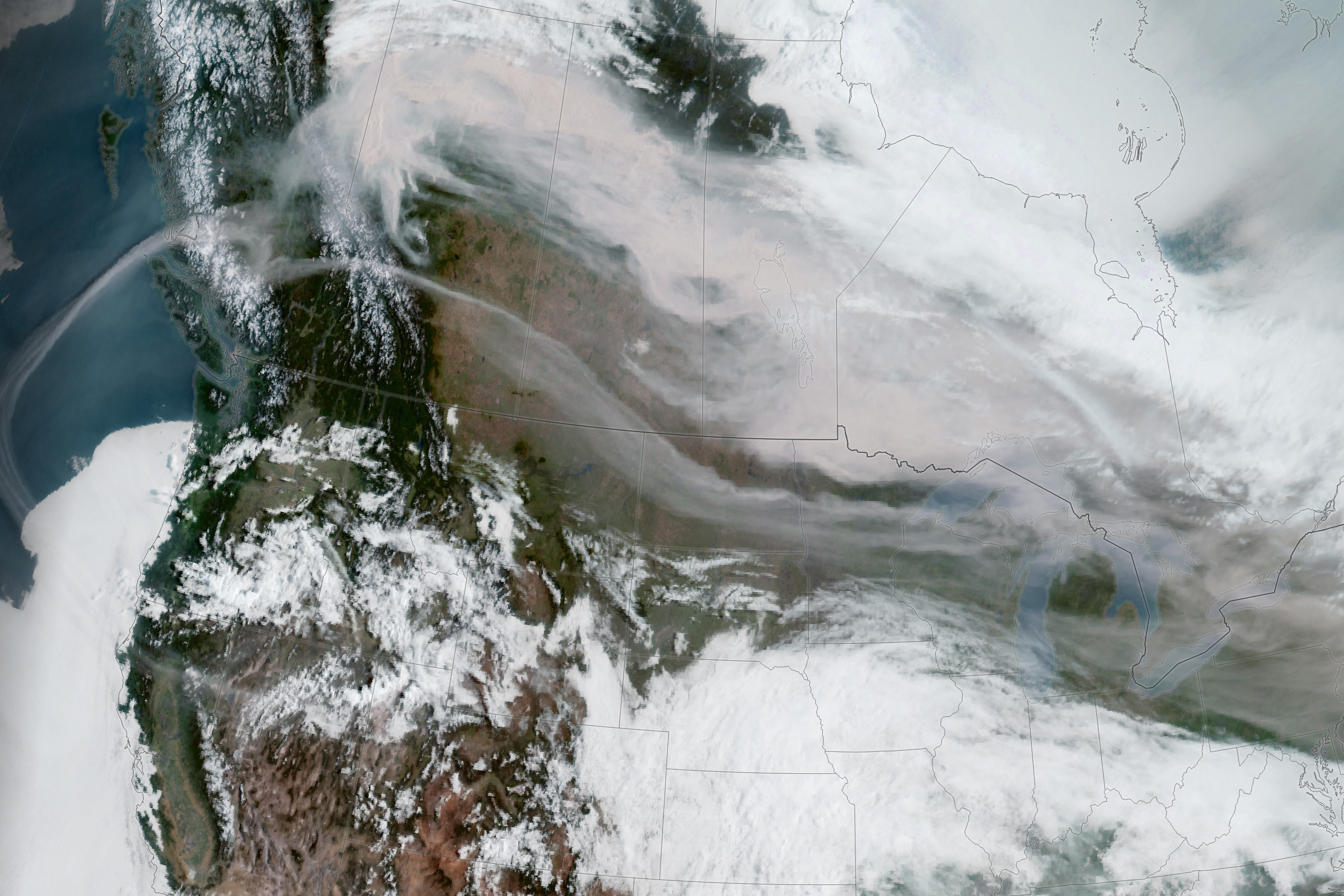As the wildfires in western Canada continue to burn, we in Chicago continue to live under the smoke plume, going on four days now. NASA's Earth Observatory has art:

Raging fires filled the skies of southern Canada and the northern United States with smoke in mid-May 2023. The fires had scorched 478,000 hectares (1,800 square miles) in Alberta, British Columbia, and Saskatchewan, as of May 16, which is 10-times the average area burned for this time of year.
As of May 16, there were 87 wildland fires burning in Alberta, a quarter of which were classified as out of control, meaning the fires were expected to grow in size. A majority of the 478,000 hectares burned have been in Alberta, according to the Canadian Wildland Fire Information System, but several fires were classified as burning out of control on that day in British Columbia and Saskatchewan.
Wind brought smoke from the fires down to Maryland on May 10, making the Sun look milky in the sky. The AERONET instrument at NASA Goddard in Greenbelt, Maryland, had an average AOD value of about 1 in visible wavelengths on that day. On May 16, smoke contributed to hazy skies and hazardous air quality in North Dakota and northern Minnesota. An AERONET sensor at the University of North Dakota in Grand Forks measured an average AOD of 2.3 on May 16, with peak values close to 3.
Unseasonably hot weather is expected to continue over the next few days in Western Canada. In British Columbia, temperatures are expected to reach 30° Celsius (86° Fahrenheit) through May 18, according to Environment Canada.
New York Times columnist David Wallace-Wells forecasts a hazy future:
[A] new lesson from the evolving science of wildfire is about how far its toxic smoke spreads and how widely its noxious impacts are distributed. You may think of fire in terms of scorched homes and go bags sitting ready for sudden evacuation. But distance is no cordon sanitaire for smoke. In fact, according to one not-yet-published study led by Stanford researchers exploring the distribution of wildfire smoke, an estimated 60 percent of the smoke impact of American wildfire is experienced by those living outside the states where the trees are in flames. Eighty-seven percent of the impact is experienced by those living outside the county of the original fire. And the problem is getting much worse.
[W]hile Americans often think of wildfires as a California problem, it’s much bigger than that, with more burning elsewhere in the country every year. By some estimates, land burned across the American West grew ninefold between 1984 and 2015. It may increase several more times over in the decades ahead. The number of people exposed to what are sometimes called extreme exposure days — when particulate matter is about seven times as high as the World Health Organization safety standard — has grown 27-fold in just the last decade.
In recent years, wildfire smoke accounted for up to half of all air pollution in the American West — meaning that if you live there, as much particulate matter has blown into your skies and your lungs from the burning of trees and brush as from all other human and industrial activity combined. And the grim effects are not locally constrained: Approximately half of American deaths from all forms of air pollution come from out-of-state sources, according to one study published in Nature in 2020 — a finding that implies a remarkably large toll, given that estimates for the total number of premature American deaths attributable to fossil fuel pollution in a given year run as high as 350,000.
Today's layer of smoky haze is pretty high up over Chicago, so my ground-based AQI is a healthy 23. But you might want to reconsider your getaway weekend in Calgary.